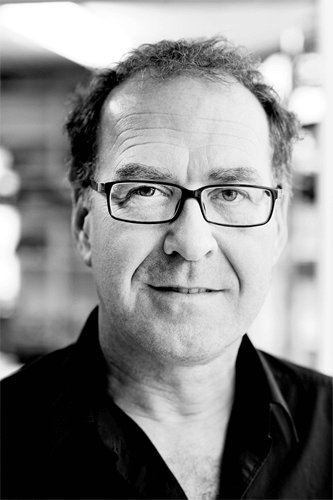Thomas Wrede was born in 1963 in Iserlohn (Germany). He studied Fine Art in Muenster and Berlin. From 1998 until 2005 he taught photography at the Kunstakademie Muenster. During the last few years numerous exhibitions presented his works in- and outside of Germany. Particularly, the solo exhibitions at the Museum Kunst der Westkueste, Alkersum (2010), the Kunsthalle Bielefeld (2010) and at the Wallraf-Richartz-Museum, Koeln (2007) and the following group exhibitions should be mentioned: at the National Museum for History and Art, Luxembourg (2013), the Seoul Museum of Art, South Korea (2011) and the Art Museum, Wuhan, China (2009). Since 1998 Wrede has shown his works in several galeries of the United States (New York, San Francisco and Los Angeles).
Wrede's photographs have also been placed in these major art collections: Staatsgalerie Stuttgart, Landesmuseum Muenster, The West Collection Philadelphia, Kunst-am-Bau-projects in Berlin for the German State, UBS Zuerich & Lucerne, DZ-Bank Frankfurt. The artist won some important awards, among others the Karl-Hofer-Preis of the Hochschule der Kuenste Berlin. Thomas Wrede published all photographic series in several nice books.
About Real Landscape
Thomas Wrede already counts as an established position to the Duesseldorf photography scene. His large-format, quiet, but also dramatic landscape photographs fascinate in a particular way, as the observer immediately feels himself confronted with all the facets of human existence. Idyll and catastrophe, longing and debacle form the fine line of atmospheres which through Wrede's complex direction have a thought-provoking effect. Scenic cloud formations or glistening sunsets at the horizon blur the boundaries further. The point of origin of his photographic works is time and again the longing for nature. Wrede thereby utilizes in his 'Real Landscapes'-series requisites from model railways, placing miniature houses and trees into real nature – at the beach, into the snow or in a nearby puddle.
Yet, only a small excerpt of nature measuring at most a few steps in circumference is of concern. The observer's perception is thus set on the wrong track because in the photograph the whole setting is perceived in line with the size of the trees and houses. The illusion, generated through the inconsistencies and discrepancies of the proportions, is the result of Wrede's skilful use of his analogue plate camera with wide angle – he interferes with scales and reduces distances. A puddle thereby becomes a lake, a pile of snow turns into snowcapped mountain ranges and a few centimetres of even sand become a milelong beach. (from the Press Release by Beck & Eggeling)
Selected Books on

